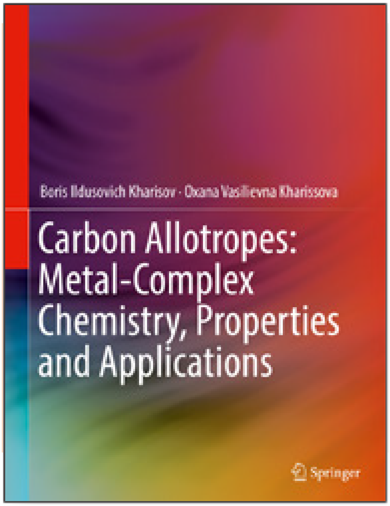
This book is an outstanding addition to existing carbon literature. It includes comprehensive details (properties, synthesis, and applications) about various existing forms of carbon, both natural and manmade. The vast compilation of properties of carbon in different forms makes it unique, whereas most existing books are restricted to a few carbon forms. This book discusses a variety of carbon allotropes varying from common (graphite, coal) to rare (nanoplates or nanocups), to well-developed industrially (carbon black), or intensely studied on the nanolevel (carbon nanotubes or graphene), or doped with metals and functionalized with organic and organometallic groups.
Each chapter contains a large number of high-quality figures and tables, which will help the reader understand the concepts, properties, and behavior of carbon materials. Appropriate comparisons among different carbon materials are used wherever possible to provide a better insight into the evolution of properties as carbon changes its forms. References for further reading are also provided. A small collection of problems with their solutions is included at the end of chapter 11.
Chapter 1 briefly presents classification of various carbon allotropes according to dimensionality and hybridization and also discusses their properties. The properties of conventional carbon allotropes (graphite, diamond, and amorphous carbon) and their applications are discussed in chapter 2.
Chapter 3 covers details about the structure, properties, synthesis, and applications of classic carbon nanostructures and provides insight into the salient features of these materials, such as reactivity and electron-transport mechanisms.
The text provides an in-depth understanding of lesser-known carbon forms (such as nano–New York, nano-paper, nano-volcanoes, nano-sponges) along with discussions in chapter 4. Chapter 5 presents details about synthesis, properties, and applications of lonsdaleite, glassy carbon, carbon black, and xerogels, while chapter 6 includes applications of computational methods to predict new carbon forms, which have not been observed experimentally (e.g., novamene, protomene).
Chapters 7 and 8 are dedicated to coordination/organometallic compounds and composites of carbon allotropes and their solubilization. Detailed synthesis procedures for these materials are presented. Chapter 9 discusses carbon allotropes in the environment and emphasizes their toxicity. It sheds light on health risks such as rheumatoid arthritis, significant DNA damage, and autoimmune diseases. Apart from health risks, it also describes the soil and environmental pollution caused by these materials.
Chapter 10 is dedicated to applications and cost perspectives of various carbon allotropes, such as graphite, carbon black, natural coal, and glassy carbon. It also describes how the price and applications of these materials varies with their quality.
Chapter 11 provides a detailed discussion about synthesis and characterization techniques, metal complex chemistry of nanocarbons, laboratory hazards, and safety precautions. This chapter contains simple problems and solutions for students. Inclusion of more complex problems would have been helpful.
This book is an extensive portrait of carbon allotropes, with emphasis placed on properties and applications. It could serve a broad audience, including students, researchers, teachers, and others interested in the science of carbon. It is written at a level appropriate for someone with a chemistry, physics, or materials background. The book is suitable for graduate and undergraduate students.



